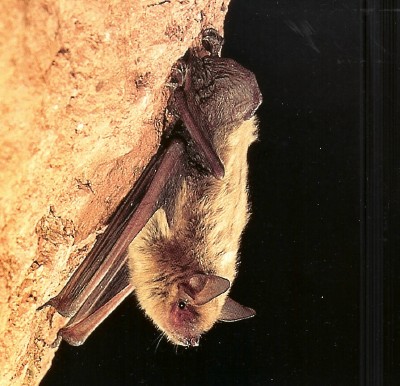
Cabeza Prieta Natural History Association
Sonoran Desert Mammals

Cave Myotis
(Myotis velifer)

|
Diet: small moths and beetles
Size: weight 12-15 grams (0.4-0.5 ounce) wingspan 28-33 centimeters (11-13 inches) Active Period: crepuscular |
These bats emerge from the daytime roost well before dark and fill their stomachs in about 0.5 hour, and then retire to some shelter such as cave, or mine for a night resting period. There is no clearly defined second foraging period in early morning as in some other species.
Cave bats occur in colonies of 2,000-5,000 individuals throughout much of its range. In summer, this species congregates in caves and mines. Most individuals in populations in Arizona appear to be migratory, but some be permanent residents that hibernate in caves during the winter.
The flight of the cave bat is stronger, more direct, and with less flutter than most other bats of the genus. Predators include snakes, hawks, owls, and raccoons. Like many insectivorous bats, this species is opportunistic in feeding habits, with diets that fluctuate by season and habitat.
After a gestation of 60-70 days, one baby is born in late June or early July. During parturition (20 minutes), the baby is caught in the mother's folded tail membrane, and then it crawls to a nipple and begins to nurse. Life span may be 10-12 years.
This article is from "Bats of the United States", 1999, by Michael J. Harvey of Tennessee Technological University, J. Scott Altenbach of the University of New Mexico, and Troy L. Best of Auburn University. Published by the Arkansas Game & Fish Commission, in cooperation with the Asheville Field Office of the U.S. Fish and Wildlife Service.
Photo Credit:
Photo #1
Copyright Creative Commons
HTML & Programing by
Thomas R. Powell